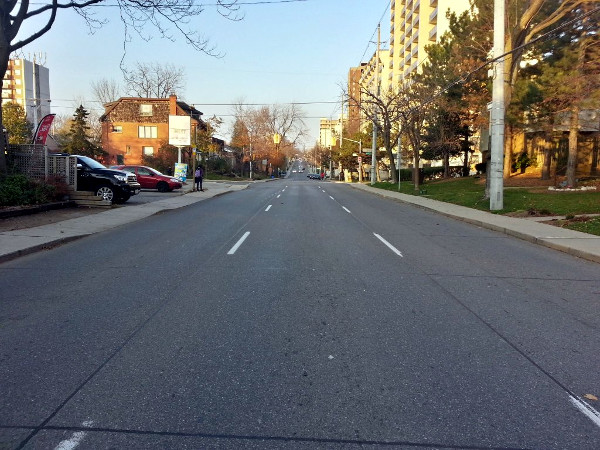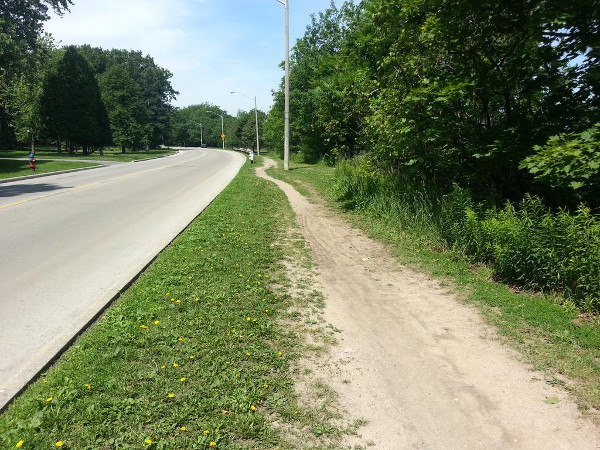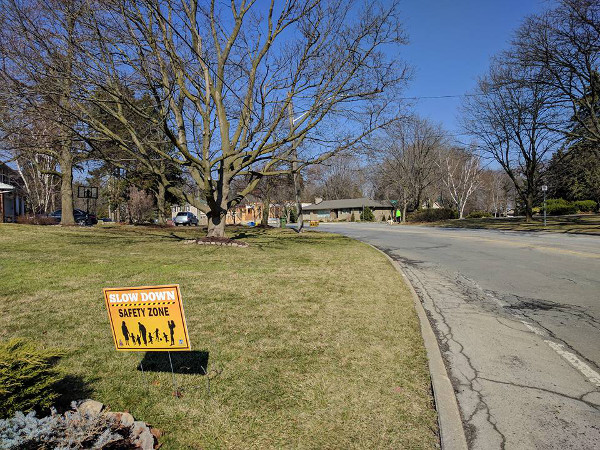When Council delays action on pedestrian safety, Council is accepting the burden of needless, preventable deaths.
By Adrian Duyzer
Published June 06, 2017
I recognize that it isn't possible to create a perfectly safe city, and that no matter what Council does, accidents - and, unfortunately, accidental deaths - will occur here. I also know that Council takes their responsibility as stewards of our city seriously, and that includes an approach to road usage that balances economic activity, safety, the convenience of road users, and so on.
As such, I would not hold a Councillor personally responsible for every unfortunate accident that occurs on our city's streets.
However, where Council does hold an elevated level of responsibility is where residents and frequently the City's own staff have identified dangerous situations, and Council does not act swiftly on this information.
Where this is especially troubling - and where it raises a great deal of ire in the community - is when Council doesn't act on this information until after someone dies!
I just read in the Hamilton Spectator that changes are coming to the road in Waterdown where poor Jasmin Hanif was killed.
Changes are coming. With all due respect to Flamborough Councillor Judi Partridge, these changes are far, far too late for this poor family.
However, they are not too late for the many families whose loved ones are still alive and intact, but who face risks every day on the many local streets that remain unsafe.
Council knows what streets these are. They discussed one of them this week, Queen Street South.

Queen Street South between green waves during afternoon rush hour (RTH file photo)
Again, with all due respect to Ancaster Councillor Lloyd Ferguson (and I truly do respect him, particularly for his leadership on the LRT file), this street is unnecessarily dangerous - always fast-moving, overbuilt, and with a woeful lack of safe crossings - and not just for the people who live along it, but also for the many residents who live near it.
I live three blocks away, on a quiet street one block long which we picked for its safety and peacefulness, but my children must cross Queen Street every day to get to school.
Or consider Scenic Drive, in Ward 8 Councillor Terry Whitehead's ward, a street is incredibly popular with pedestrians who must navigate the street without the benefit of sidewalks!

Desire path on Scenic Drive (RTH file photo)
The houses along that street are lined with signs that residents have put up, pleading with motorists to slow down.

SLOW DOWN - SAFETY ZONE sign on Scenic Drive (RTH file photo)
This is a city-wide issue. It's also uncontroversial: as we all know, requests for pedestrian safety improvements have spiked and are steadily growing.
This is an urgent issue that requires swift, bold action, because as we have seen yet again, when Council delays on pedestrian safety, Council accepts the burden of needless deaths.
That is a heavy burden indeed.
By KevinLove (registered) | Posted June 06, 2017 at 15:02:27
Fundamentally, Hamilton City Council has a responsibility to implement standards that create a transportation system that is safe for all people in Hamilton.
Such a standard, called Sustainable Safety, has been implemented in The Netherlands and is a key factor in creating the safest streets in the world. Sustainable Safety has five key principles (quoted from the above link):
Functionality (of roads);
Homogeneity (of mass, speed and direction of road users);
Predictability (of road course and road user behavior by a recognizable road design); Forgivingness (of both the road/street environment and the road users);
State awareness (by the road user).
The death of Jasmin Hanif was due to the road design of Evans Road violating the first principle: Functionality.
I will stop writing now, lest this comment turn into an article!
For more information, please see the official Dutch publication Advancing Sustainable Safety. This was conveniently translated into English by the Kingdom of the Netherlands because the Dutch government wants to help people in other countries to stop killing themselves with unsafe road designs.
Comment edited by KevinLove on 2017-06-06 15:08:27
By kevlahan (registered) | Posted June 07, 2017 at 08:57:50
Adrian makes an important point: it is not just those residents who "chose" to live on an arterial street who are harmed by a poorly designed artery that is dangerous for cyclists and pedestrians, it is everyone in the neighbourhood who must cross or walk along these streets to go about their daily business.
Unless you force everyone to drive everywhere (which is directly counter to the City's own policy), even people who do "choose" to live on side streets are affected by the poor designs of minor and major arteries.
Again, the point is not (as Councillor Ferguson seems to believe) to turn arteries into side streets, but to ensure that arteries are safer and more convenient for pedestrians and cyclists (and safer for motorists) while still carrying larger volumes of traffic.
And we know what to do: wider sidewalks, safe pedestrian crosswalks at most intersections and slower traffic (at the very least traffic should not be travelling faster than the legal speed limit).
Shockingly, streets like Queen are actually designed for highway speeds of 70-100 km/h and for illegal average running speeds of 60-80km/h!
https://www.raisethehammer.org/article/2...
This is clearly unacceptable, especially in a densely populated area like Durand/Kirkendall.
Two way conversions are a good compromise for achieving safer traffic speeds: the total number of lanes is not reduced, it makes it easier for motorists to reach destinations (and reduces traffic by eliminating the need for doubling back). But it does lower speeds and increase driver attention because of the effect of oncoming traffic.
Two way could actually be beneficial during LRT construction and afterwards by providing motorists more flexibility in reaching destinations.
Queen North of Herkimer is particularly bad in that it is largely empty outside of an hour or so in the afternoon rush hour (as shown in the photo), has multiple blocks with no safe crossing points (e.g. none between Charlton and Aberdeen), no buffer on the sidewalks and very narrow sidewalks at some locations (e.g. between Charlton and Herkimer on the West side the sidewalk is a about 1.5m wide and cars often bump up onto the sidewalk due to the bend in the road just before Herkimer!).
Note the schoolchildren waiting to cross at Charlton and the narrow sidewalks very close to the cars on the left side:
https://www.google.ca/maps/@43.2517654,-79.8817944,3a,75y,75.56t/data=!3m6!1e1!3m4!1soYn-cWepxUdGwOa76iwx9Q!2e0!7i13312!8i6656!6m1!1e1
Comment edited by kevlahan on 2017-06-07 09:08:37
You must be logged in to comment.
There are no upcoming events right now.
Why not post one?